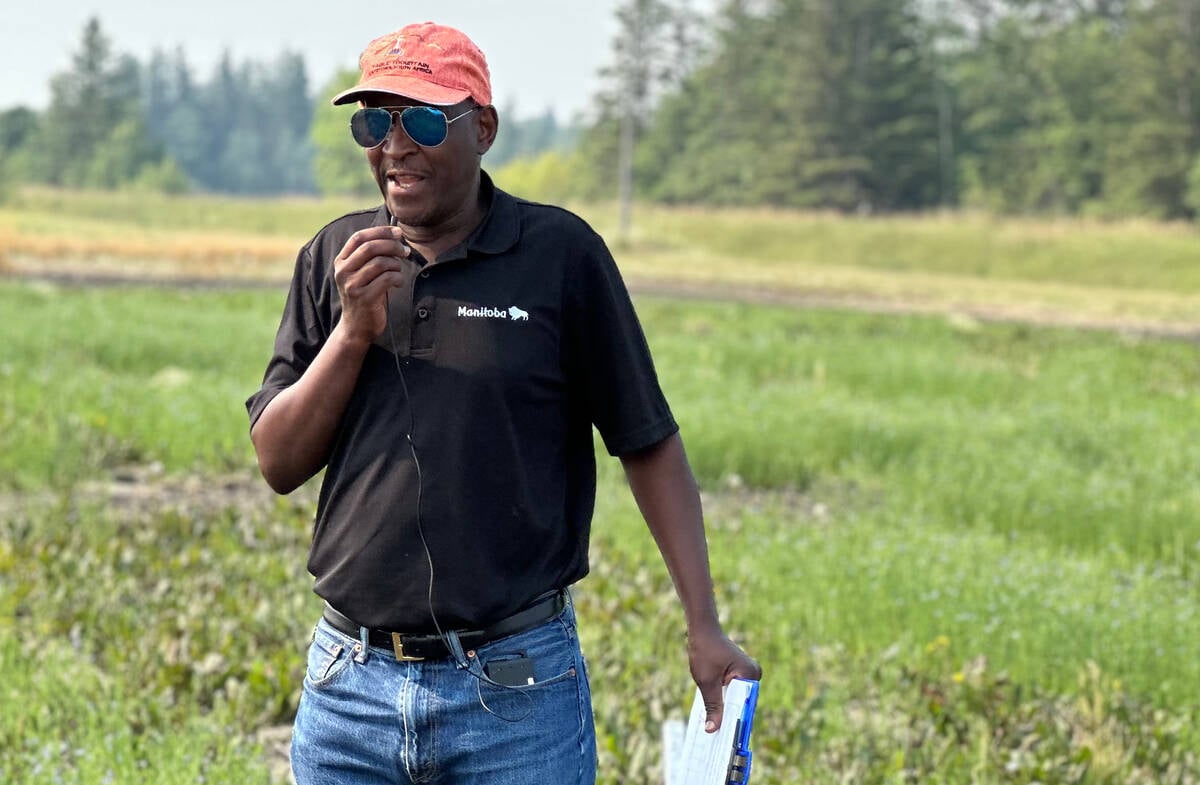A pioneer in British no-till farming said there’s a good chance European farmers will lose access to glyphosate.
“It’s a French and German thing,” said Tom Sewell at the Innovative Farmers Association of Ontario conference recently in London.
The politics of those two countries mean that there is pressure to ban the herbicide which is critical for no-till farmers. Glyphosate provides a simple and effective way to burn down weeds so that fields don’t have to be plowed or aggressively tilled.
Sewell said he has two or three years’ worth of glyphosate purchased.
Read Also

How much nitrogen can farmers really cut?
Manitoba fertilizer trials look for nitrification inhibitor sweet spot, to lower greenhouse gas emissions and cost without hurting yield.
“We would have to think differently,” he said, incorporating more crops into a rotation, including grasses.
If he could figure out how to have a continuous cover crop, then stitch in the annual crops he wanted to grow, then he wouldn’t need glyphosate, he said.
“It would be a challenge, but I’m not going back to plowing and tilling,” he said. “Part of me said ‘bring it on,’ but a lot of people would panic.”
No-till farming is growing in the U.K., he said, with a couple of hundred no-till drills sold there.
Sewell farms in County Kent, about 50 km from London. He owns 67 acres and rents or manages about 1,000 acres total from eight different landowners. He mostly grows wheat and oilseed rape, but is also trying some cover crops.
Their farm has used minimum tillage for 25 years, but in 2013 Sewell used funding from a Nuffield Scholarship to travel around the world to learn about no-till farming and improving soil.
“I wanted to visit the best no-till farmers in the world.”
That set him on a path to his recent adoption of a full no-till system, a rarity in his area where farmers still till the ground deep and often. Hot winds in his area result in a lot of topsoil blown away.
Soil health is his priority and he employs an independent agronomist to “take care of what is growing above the ground,” and a soil expert “to manage what grows below the ground.”
“The most important thing I learned about (during his Nuffield Scholarship) was soil, organic matter and the importance of roots,” he said.
He knew if he was going to go all-in on no-till farming, he had to be committed. He sold off all his tillage equipment to raise some of the money to pay for the best no-till drill he could get.
He ordered the seed placement part of the drill from a New Zealand company. It places seed and if wanted, fertilizer in a slot at the bottom of the trench, versus a straight vertical seed trench.
Sewell had the rest of the drill manufactured in Britain and he’s very happy with the yields he’s getting. Like others in England, he’s getting high wheat yields, this year 165 bushels of wheat at 13 per cent protein. He got 50 per cent higher price because of the protein level he hit.
“You’re buying a whole system, not just a no-till drill,” he said. “Your plants grow different. Your herbicides work different. You have to change your way of thinking.”















